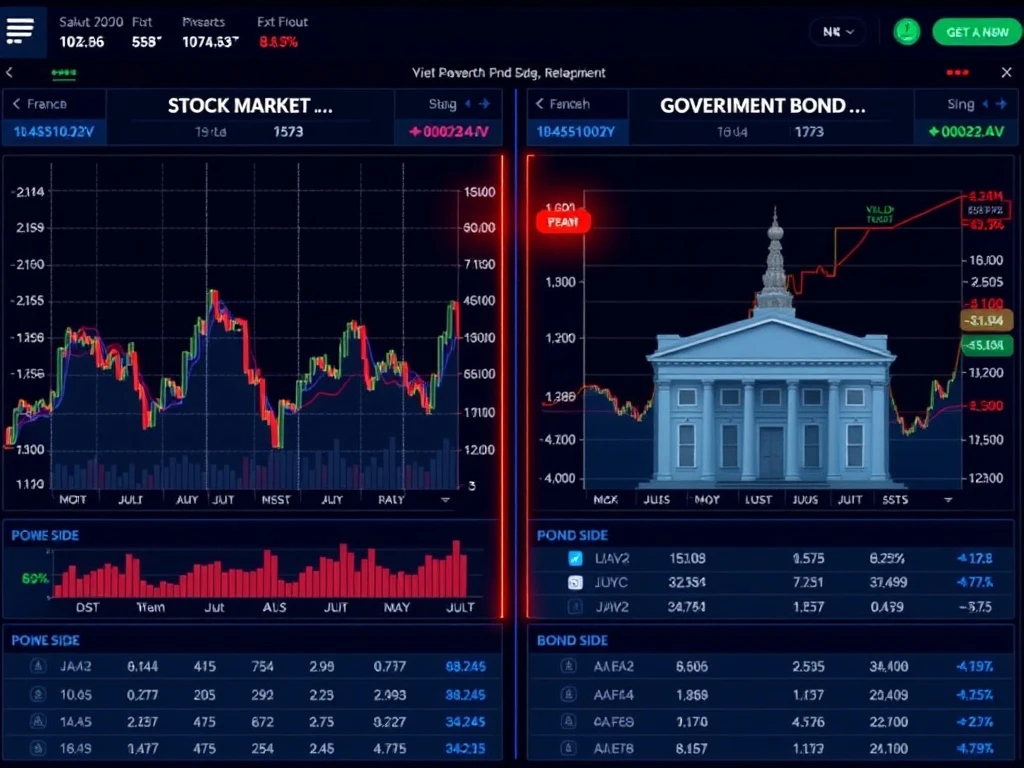Citigroup analysts sound alarm bells as French stocks show alarming disconnect from bond market stress signals, creating potential investment risks that market participants cannot afford to ignore.
French Stocks Show Dangerous Divergence From Reality
Citi’s research team identifies significant valuation gaps between French stocks and underlying economic indicators. Consequently, investors face unexpected market risks. The analysis reveals three critical disconnects:
- Valuation metrics remain elevated despite bond market warnings
- Risk premiums fail to reflect sovereign debt concerns
- Market sentiment overlooks fundamental economic pressures
Bond Market Signals French Economic Stress
French government bonds clearly indicate growing economic concerns. Meanwhile, equity markets continue displaying optimism. This divergence creates investment vulnerability. Bond yields have shifted dramatically in recent months. However, stock valuations maintain their previous levels. Analysts observe this pattern across multiple sectors.
Citi’s Analysis Methodology and Findings
The investment bank employed comprehensive cross-market analysis techniques. Their research compared French stocks performance against bond market movements. Results show consistent undervaluation of risks. The study examined historical correlation patterns. Additionally, it projected future market scenarios. Findings indicate potential correction triggers.
Market Implications for French Stocks Investors
Investors must reconsider their French stocks exposure strategies. Portfolio rebalancing becomes essential under current conditions. Risk management approaches require immediate revision. Market participants should monitor several key indicators:
- Yield spreads between French and German bonds
- Credit default swap pricing movements
- Sector-specific vulnerability assessments
Historical Precedents and Market Corrections
Previous market cycles demonstrate similar divergence patterns. Eventually, valuations always realign with fundamentals. French stocks experienced comparable situations in past decades. However, current conditions present unique challenges. Global economic factors compound existing pressures. Investors should study historical correction timelines.
Risk Mitigation Strategies for Portfolio Managers
Professional money managers implement defensive positioning strategies. They gradually reduce French stocks overweight positions. Simultaneously, they increase hedges against market corrections. Diversification across European markets becomes crucial. Currency hedging gains additional importance. Liquidity management takes priority in uncertain conditions.
Regulatory Environment and Market Stability
European regulators monitor the French stocks situation closely. They possess intervention tools if market stability threatens. However, preventive measures remain limited currently. Regulatory bodies focus on systemic risk containment. They coordinate with major financial institutions. Market surveillance intensifies during divergence periods.
Future Outlook for French Equities
Market analysts project various scenarios for French stocks performance. Most predictions include valuation adjustments. However, timing remains uncertain. Economic recovery could mitigate some pressures. Alternatively, prolonged divergence might deepen eventual corrections. Investors should prepare for multiple outcomes.
Frequently Asked Questions
What specific French stocks sectors show greatest vulnerability?
Banking and financial services display highest correlation to bond market stress. Additionally, utilities and infrastructure face significant pressure.
How long can markets maintain this divergence according to historical data?
Historical patterns show divergences typically resolve within 6-18 months. However, external factors can extend these periods.
What immediate steps should retail investors take?
Retail investors should review portfolio concentration. They must assess risk tolerance levels. Professional advice becomes particularly valuable.
Are other European markets showing similar patterns?
Some Southern European markets display milder versions. However, French stocks present the most pronounced divergence currently.
What economic indicators should investors monitor most closely?
Bond yield spreads, credit default swaps, and economic growth forecasts provide crucial signals. Manufacturing data also offers important insights.
How does currency fluctuation affect this situation?
Euro strength or weakness significantly impacts international investment flows. Currency movements can accelerate or delay market corrections.




